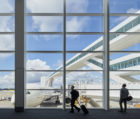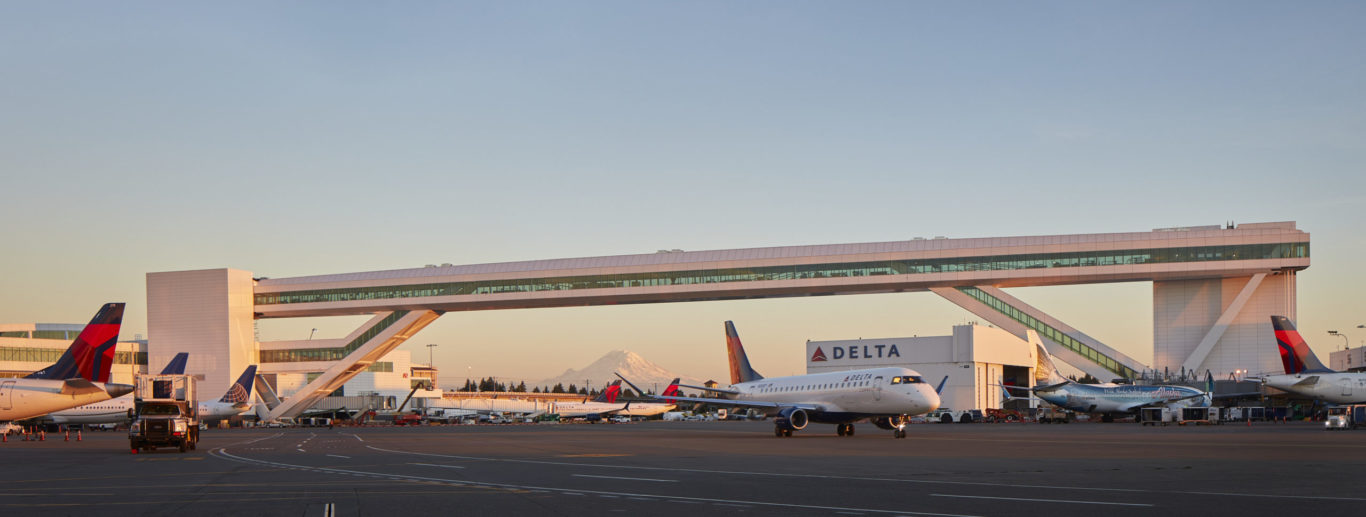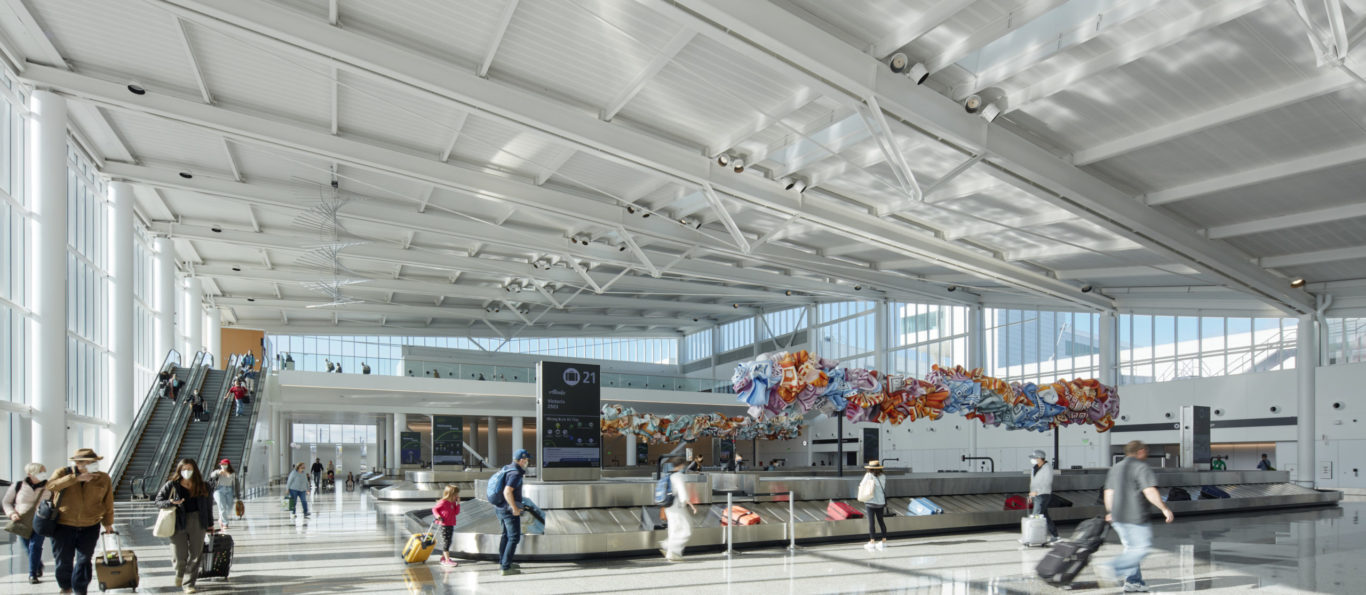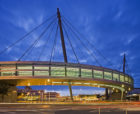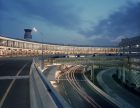Greater capacity, more flexibility
The International Arrivals Facility (IAF) at Seattle-Tacoma International Airport (SEA) replaces a fifty-year-old arrivals facility with a dynamic structure that is nearly five times larger, dramatically improves the passenger experience, and readies the airport to nimbly adapt to future demands. Flexibility is the defining principle of the design: the project involved reconfiguring the existing Concourse A to create a dual-purpose aircraft secure corridor that is able to serve both international and domestic flights. This increases the number of gates capable of receiving international wide-body aircraft from 12 to 20. The IAF also offers a faster, more enjoyable arrivals process in a 450,000-square-foot multi-level space that can smoothly accommodate the arrival of 2,600 passengers an hour.


